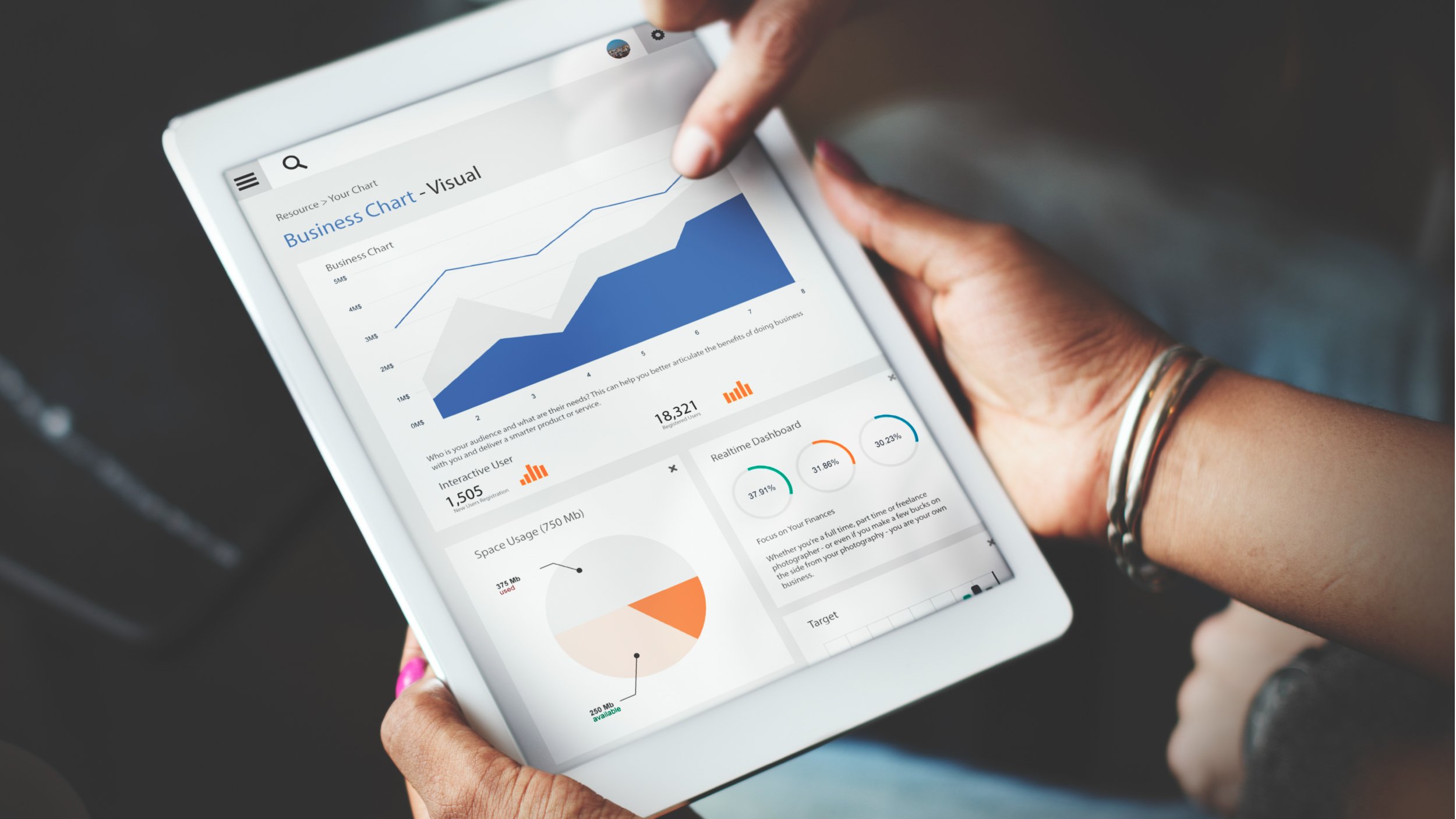5 min read
A 360º Data View Will Transform Your Firm into a Super Force

The role of accounting professionals has been in constant evolution for decades. Traditionally, accountants and CPAs were relegated to the books and compliance duties. This is mostly due to the pre-spreadsheet and pre-internet era when these tasks legitimately took up most of a firm’s available bandwidth.
Thankfully a lot has changed since then. Compliance work is exponentially more efficient, freeing up accounting professionals to do more, and accordingly, the expectations of them have changed.
Today, the expectation of value provided by accounting practices is growing. Clients want (and need!) actionable insights into every aspect of a company’s operation and finances. The good news is that there are dozens of financial technology tools that enable accounting professionals to do so.
Tools that either:
-
Open up capacity by handling data and compliance tasks (e.g., bookkeeping)
-
Quickly assimilate data from every aspect of a business, allowing for customized reporting of metrics (financial or otherwise)
Now the question becomes, how else can you provide value and generate more revenue for your firm? The answer is related to the power of a business’ nonfinancial data to create a comprehensive 360º view.
The Importance of Nonfinancial Data
In traditional organizations, each department would focus on its data and metrics isolated from each other. HR cared about their people-centric KPIs, operations focused on procedural performance, sales and marketing cared about lead volume, and so on.
So what’s the problem with this approach?
It’s not a 360º view, which means it doesn’t allow businesses to connect the dots and measure what their impact is on their bottom line!
In other words, they spend all their time and energy without knowing how big or small of an impact their work has. Without a 10,000-foot view of the business, information is compartmentalized and no one’s able to offer advice and feedback.
With the Right Data, Your Accounting Firm is a Business Superhero
Here’s where accounting firms emerge like the Justice League to help save businesses from interior and exterior factors.

Take that, inefficient processes that create money leaks!
Accounting firms can make all of a client’s data work together, giving them that big-picture view and offering advice that really moves the needle—and saves them money.
What’s more, the prevalence of online business models (i.e., eCommerce or SAAS) brings to light the intricate nature of financial and nonfinancial data: they go hand-in-hand.
For example, if we look at a metric like conversion rate, we can directly correlate an increase in conversion rate with an increase in revenue. This makes the conversion rate a highly valuable metric to keep track of from a financial perspective.
Firms who connect these forms of data into existing reporting offer something incredibly valuable to their clients. Some companies are already tracking key nonfinancial metrics “in-house,” especially in the tech industry.
So what if your firm connected those nonfinancial insights to a client’s financial data and offered advice based on the 10,000-foot view?
Again, you’d be a superhero. 💪
5 Key Nonfinancial KPIs to Track
It’s important to note how relevant each nonfinancial metric will be to each industry and business model. The needs of a B2C eCommerce business will be different from a SAAS startup, and these, in turn, will be different from a logistics company.

Key point: Make sure you have an in-depth understanding of your target client. This will help you choose the right KPIs to take into consideration, help with your messaging, and improve client satisfaction—because you’re offering the right metrics for a particular industry/market.
Here are 5 common nonfinancial metrics for you to consider including in your financial reports.
Customer retention data
If your clients are in the SAAS space or have any sort of subscription-based model, customer retention data is critical to their business. Essentially, customer retention data is how you track the dynamics between acquiring and losing customers and the impact this has on revenue.
Here are 3 of the main customer retention data metrics for you to consider.
-
Customer Churn: This is one of the most important retention metrics since it can give you a clear indication of how well accepted your client’s service is to their customer and the financial impact it will have on the organization. Churn is basically customer attrition: the rate at which customers stop working with a company. Some churn is a natural part of business, but high churn mixed with low customer acquisition leads to a decrease in revenue.
-
Customer Lifetime Value: Also known as LTV (lifetime value), this metric provides a clear-cut indicator of how much each customer is worth over a given period. Knowing how a business’ LTV fluctuates can help you give accurate revenue forecasts as well as the ability to measure the impact of customer-centric initiatives.
-
Existing customer revenue growth rate: This metric measures how much additional revenue each customer generates throughout their life cycle. If the rate is positive, it means a client’s account and sales team are doing a good job at incentivizing their customer base to increase their spending. Put another way, it’s a company’s rate of upselling.
NPS scores
Net Promoter Scores (NPS) measure the overall satisfaction of a customer base with a brand and how likely they are to recommend it to others. This data is typically obtained through customer surveys which typically ask, “How likely are you to recommend this service to others?”
Higher NPS scores are usually a good indicator of revenue growth, but you need to look at other sales and marketing metrics to make sure growth isn’t attributed to other factors.
Sales Pipeline metrics
Sales pipeline metrics refer to all the data that’s collected when leads start to enter the pipeline. In general terms, pipeline metrics can give you an idea of how effectively the sales and marketing team are working together and help predict sales performance, which has a direct impact on revenue.
-
Number of qualified leads: This is the overall number of good leads that are coming into a business’ pipeline. The more real opportunities a sales team has, the more likely the business is to see revenue growth.
-
Win Rate: This is the percentage of sales opportunities that a sales team ends up closing. It’s a great indicator of sales performance and the quality of the leads that they’re receiving. And high-quality leads means a company’s marketing efforts are working.
-
Average deal size: This is a great indicator of how much revenue comes from combined sales efforts. It keeps track of what type of products and services customers are buying and how much revenue that generates.
Traffic metrics
These refer to the number of visitors and their reaction to your website and other digital assets a business has. Not surprisingly, traffic metrics are critical for ecommerce and other businesses that operate completely online.
-
Website traffic: Is the total amount of visitors that a website receives over a period of time. In most cases, more traffic means more sales opportunities, however, traffic quality also matters.
-
Average time on site: This metric measures how much time visitors spend on your website. Usually, the longer they spend on a website, the more likely they are to interact or make a purchase. Again, it can help a business recognize how effective their digital marketing efforts are.
Conversion rate metrics
Conversion rate measures how effectively a business is at converting traffic into sales or some other conversion event, like an email signup or interaction with your sales team.
-
Conversion rate: The percentage of traffic that buys or completes a conversion event. This is a great indicator of the impact that sales and marketing assets are creating, as well as traffic quality.
-
Cost per conversion: This is how much a business is spending on sales and marketing to drive a conversion or sale.
Make a 360º View of Data the Standard
We’re fully into the information era, yet some firms are still stuck in the old way of doing things and not embracing the power of all data. That’s a problem—not only for firms that are prioritizing growth, but also for clients who everyday face countless options for how their accounting needs are met.

There’s no getting around it: an accounting firm that integrates nonfinancial data into its services and reports is one that will be able to increase the value it brings to clients and win more business.
For clients, it’s a game changer. A comprehensive view of their financial and nonfinancial data helps them see how their finances are connected to the rest of their operations. It gives them clarity in their decision-making. And if the insight you provide can lead them to making better strategic decisions, then you’ll be transcending your role and creating a real impact with your clients.
Want to read more about how data can help your firm differentiate? Click below to check out our blog post: “Automated Technology Helps CPA Firms Gain Competitive Advantage”!


